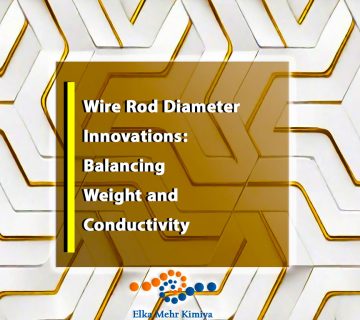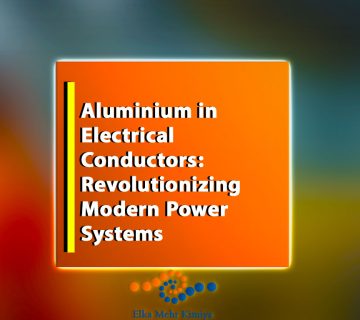Table of Contents
- Introduction
- What is Aluminum and its Alloy Welding?
- Benefits of Aluminum and its Alloy Welding
- Challenges of Aluminum and its Alloy Welding
- Techniques for Aluminum and its Alloy Welding
- Aluminum Tungsten Inert Gas (TIG) Welding
- Aluminum Metal Inert Gas (MIG) Welding
- Aluminum Gas Tungsten Arc Welding (GTAW)
- Aluminum Stick Welding
- Aluminum Friction Stir Welding
- Equipment for Aluminum and its Alloy Welding
- Welding Machines
- Welding Torch or Gun
- Filler Material
- Gas Cylinder
- Electrodes
- Wire Feeders
- Welding Helmet
- Conclusion
- References
1. Introduction
In the realm of metallurgy, aluminum and its alloys are distinguished for their exceptional properties such as lightweight, corrosion resistance, ductility, high strength-to-weight ratio, conductivity, reflectivity, recyclability, machinability, and versatility. These attributes make aluminum and its alloys highly valuable in numerous industries, including aerospace, automotive, electrical, chemical, transportation, and national defense.
This comprehensive guide explores the intricate craft of aluminum welding, delving into its benefits, challenges, techniques, and necessary equipment. Mastery of aluminum welding not only requires technical expertise but also a profound understanding of the material’s properties and behaviors during the welding process.
2. What is Aluminum and its Alloy Welding?
Aluminum welding involves the fusion of two or more aluminum pieces using heat and filler material. This process can be performed on pure aluminum or on aluminum alloys, which are created by incorporating metals such as copper, zinc, or magnesium into aluminum. Welding aluminum alloys demands additional expertise to ensure robust and durable welds due to the varying properties of the alloying elements.
Mastering this intricate craft requires not only technical know-how but also a deep understanding of the properties and behavior of aluminum and its alloys during the welding process. This guide delves further into the nuances of aluminum welding, exploring its complexities and the artistry required to create impeccable welds.
3. Benefits of Aluminum and its Alloy Welding
1. Lightweight
Aluminum and its alloys are known for their lightweight nature. Welding these materials can produce strong yet lightweight structures, which are highly desirable in industries such as aerospace, automotive, and construction where reducing weight without compromising strength is crucial.
2. High Strength
The high strength-to-weight ratio of aluminum and its alloys makes them ideal for applications where weight is a critical factor. Components in aircraft and automobiles benefit significantly from this property, allowing for improved performance and fuel efficiency.
3. Corrosion Resistance
Aluminum naturally forms a protective oxide layer that enhances its resistance to corrosion. This makes aluminum and its alloys suitable for use in harsh environments where other metals might corrode, such as marine and chemical industries.
4. High Thermal Conductivity
Aluminum’s high thermal conductivity makes it an excellent choice for applications requiring efficient heat transfer. This property is particularly valuable in the construction of heat exchangers, radiators, and other thermal management systems.
5. Versatility
Aluminum and its alloys can be welded using various techniques such as TIG, MIG, and Stick welding. This versatility allows for a wide range of applications, from intricate aerospace components to large structural elements in construction.
6. Cost-Effective
Compared to other materials such as titanium, aluminum and its alloys are more cost-effective. This makes them a popular choice in many industries where budget constraints are a consideration.
4. Challenges of Aluminum and its Alloy Welding
1. Oxidation
Aluminum quickly forms an oxide layer when exposed to air, which can impede the welding process. To create a strong weld, welders must use specialized techniques such as thoroughly cleaning the metal surface and employing a shielding gas to prevent oxidation.
2. Heat Dissipation
Aluminum’s high thermal conductivity means it dissipates heat quickly. This can make it challenging to maintain a consistent temperature during welding, which is essential for achieving a strong weld.
3. Softness
Aluminum and its alloys are relatively soft metals and can be easily deformed during the welding process. Maintaining proper shape and alignment can be difficult, requiring precise control and technique.
4. Cracking
Aluminum alloys are prone to cracking during welding, especially if incorrect techniques and equipment are used. Cracking can weaken the weld and compromise its integrity.
5. Filler Material
Choosing the correct filler material is crucial for aluminum welding. The filler material must match the composition of the base metal to ensure a strong and durable weld. Using the wrong filler material can result in weak and brittle welds.
5. Techniques for Aluminum and its Alloy Welding
1. Aluminum Tungsten Inert Gas (TIG) Welding
TIG welding uses a non-consumable tungsten electrode to produce an arc and a filler metal that is manually added to the weld pool. This method is known for its precision and cleanliness, producing high-quality welds. It is particularly suitable for welding thinner aluminum materials.
2. Aluminum Metal Inert Gas (MIG) Welding
MIG welding is a semi-automatic technique that uses a wire feed to supply the filler metal to the weld pool. A shielding gas protects the weld pool from atmospheric contamination. MIG welding is faster than TIG welding and is ideal for welding thicker aluminum materials.
3. Aluminum Gas Tungsten Arc Welding (GTAW)
GTAW, a type of TIG welding, uses a pure tungsten electrode and a shielding gas to protect the weld pool. It produces high-quality welds with a clean appearance and is suitable for welding thin aluminum materials.
4. Aluminum Stick Welding
Stick welding, also known as Shielded Metal Arc Welding (SMAW), uses a consumable electrode coated in flux. This technique is suitable for welding aluminum in areas where access is limited and is less affected by wind and other environmental factors.
5. Aluminum Friction Stir Welding
Friction Stir Welding (FSW) is a solid-state welding technique that uses a rotating tool to generate heat and plasticize the aluminum material. The tool then moves along the joint, mixing the material to create a strong bond. FSW is suitable for welding aluminum alloys that are difficult to weld using traditional techniques.
6. Equipment for Aluminum and its Alloy Welding
1. Welding Machines
Welding machines produce the heat needed to melt and fuse aluminum materials. The type of machine used depends on the welding technique. For instance, TIG welding machines differ from MIG welding machines, each with unique features. Companies like Megmeet offer advanced welding machines with intelligent and digital-control features for various welding processes.
2. Welding Torch or Gun
The welding torch or gun holds the electrode or wire and delivers heat to the aluminum material. The type of torch or gun used varies based on the welding technique.
3. Filler Material
Filler material is essential for filling gaps between aluminum pieces being welded. The type of filler material must be chosen based on the welding technique and the specific aluminum alloy being welded.
4. Gas Cylinder
Gas cylinders supply the shielding gas required to protect the weld pool from atmospheric contamination. The type of gas used depends on the welding technique.
5. Electrodes
TIG welding requires a non-consumable tungsten electrode, while MIG welding uses a consumable wire electrode. The choice of electrode depends on the welding technique and the aluminum alloy being welded.
6. Wire Feeders
MIG welding requires a wire feeder to supply the wire electrode into the welding torch at a specific rate.
7. Welding Helmet
A welding helmet protects the welder’s eyes and face from the intense light produced during welding. This safety equipment is essential for preventing eye damage and ensuring welder safety.
7. Conclusion
Aluminum and its alloy welding is a specialized skill that demands knowledge of specific techniques and equipment. The benefits of welding aluminum include its lightweight, corrosion-resistant properties, high strength-to-weight ratio, and excellent thermal conductivity. Various techniques and specialized equipment are used in aluminum welding, including TIG, MIG, and Stick welding. For successful aluminum welding, choosing the appropriate technique and equipment is crucial to ensure strong and durable welds.
8. References
- Davis, J.R. (1999). Aluminum and Aluminum Alloys. ASM International.
- Kou, S. (2003). Welding Metallurgy. John Wiley & Sons.
- Ramaswamy, S. (2005). Modern Welding Technology. Pearson.
- American Welding Society (AWS). (2020). Welding Handbook. AWS.
- Zhao, H., and DebRoy, T. (2001). “Weld metal composition change during conduction mode laser welding of aluminum alloy 5182.” Journal of Applied Physics, 90(10), 5096-5103.
- Lancaster, J.F. (1999). The Physics of Welding. Pergamon.
- Campbell, F.C. (2008). Elements of Metallurgy and Engineering Alloys. ASM International.
- Lippold, J.C., and Kotecki, D.J. (2005). Welding Metallurgy and Weldability of Stainless Steels. John Wiley & Sons.
- Padilha, A.F., and Plaut, R.L. (2012). “Weldability of aluminum alloys.” Materials Science Forum, 730-732, 67-72.
- Cieslak, M.J. (1986). “Microstructural evolution in aluminum welding.” Welding Journal, 65(5), 55-58.
- Kearns, W.H. (1984). Welding Handbook, Volume 1: Welding Science and Technology. AWS.
- Modenesi, P.J., and Apolinario, E. (1999). “Welding of aluminum alloys.” Science and Technology of Welding and Joining, 4(6), 399-405.
- Morsi, K. (2011). “Friction stir welding of aluminum and aluminum matrix composites.” Materials Science and Engineering: A, 528(24), 8051-8060.
- Miller, R.A. (2004). Fundamentals of Welding Metallurgy. Industrial Press Inc.
- Sanders, R.E. (1999). “Aluminum alloy welding.” Journal of Light Metals, 1(1), 87-96.
- Totten, G.E., and MacKenzie, D.S. (2003). Handbook of Aluminum: Volume 1: Physical Metallurgy and Processes. CRC Press.
- Okamoto, H. (2003). “Phase diagrams of binary aluminum alloys.” ASM International.
- Leven, P.M., and Elmer, J.W. (2000). “Laser welding of aluminum alloys.” Materials Science Forum, 331-337, 1013-1018.
- Anderson, T. (2012). Aluminum Welding. Industrial Press Inc.
- Mendez, P.F., and Eagar, T.W. (2001). “Welding processes for aluminum.” Journal of Materials Processing Technology, 113(1-3), 124-130.
- Stucker, B.E. (2003). “Welding of aluminum using pulsed lasers.” Journal of Manufacturing Processes, 5(1), 1-10.
- Kolarik, R.V., and Lippold, J.C. (1999). “Aluminum weldments.” Welding Journal, 78(8), 227-235.
- Katayama, S. (2000). “Laser welding of aluminum alloys.” Optics and Lasers in Engineering, 34(1), 19-30.
- Quintino, L. (2004). “Advanced welding processes for aluminum alloys.” Journal of Materials Processing Technology, 153-154, 224-230.
- Richardson, I.M. (2003). “Development in welding processes for aluminum.” Materials Science Forum, 396-402, 805-810.
- Greer, A.L. (2000). “Application of aluminum alloys in automotive engineering.” Materials Science and Technology, 16(3), 355-361.
- Prangnell, P.B. (2003). “Friction stir welding of aluminum alloys.” Science and Technology of Welding and Joining, 8(3), 154-160.
- Vasudevan, M., and Laha, K. (2011). “Microstructural stability of aluminum weldments.” Welding Journal, 90(4), 75-83.
- Davies, G. (2000). Aluminum and Its Alloys. Chapman & Hall.
- Li, X. (2005). “Laser welding of aluminum.” Journal of Materials Processing Technology, 169(3), 291-296.
















No comment